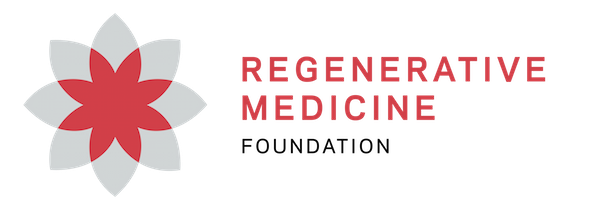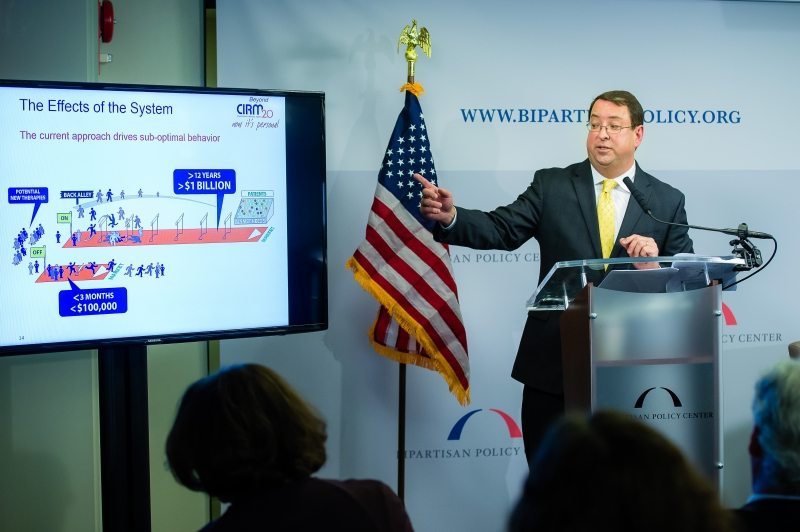The California Institute for Regenerative Medicine (CIRM) is launching the CIRM Translating Center (TC), the first center in the world designed specifically to overcome the unique challenge of manufacturing, safety testing, and other activities needed to successfully apply to the Food and Drug Administration (FDA) for approval to start a stem cell clinical trial.
We asked Randy Mills, CIRM’s President and CEO what was the rationale behind creating the Translating Center and how will this advance the field or regenerative medicine:
Randy Mills: Today it takes about eight years to move a promising stem cell treatment from the lab into human trials. That’s eight years many people with serious disease don’t have. We aim to cut that time in half. The Translating Center is a major part of how we will accomplish this goal.
With this we believe we have made California home to the most pioneering and progressive approach in moving promising stem cell research out of the lab and into clinical trials in people.
What will the Translating Center do?
Many researchers have little experience in applying to the FDA for approval to start a clinical trial. This is an incredibly complex, time-consuming process, so we created the TC to help them. It will offer a full range of the stem cell specific testing and support services necessary for a potential new therapy to win FDA approval. That includes offering expert guidance to researchers about the FDA’s testing requirements for stem cell products; help in conducting preclinical research activities, including pharmacology and toxicology studies; guidance on manufacturing stem cell products under the highest quality standards for use in preclinical and clinical studies.
“Today it takes about eight years to move a promising stem cell treatment from the lab into human trials. That’s eight years many people with serious disease don’t have. We aim to cut that time in half”
“Equally important is that they will do this in a way the that FDA is used to hearing so it comes in a format that is easier for them to assess and judge quickly. The things the FDA asks for in a stem cell therapy are different than they look for with a small molecule or more conventional therapy, so the way you go about proving and providing those things to the FDA is different than with small molecules. This machine will help researchers do that.”
Why is this important?
There are a number of elements that drive up cost in stem cell therapy and one of those is time. Every year a drug spends in development costs as much as $250 million. So if you can cut four years of the development time you can save up to $1 billion.
That’s why we are delighted to partner with QuintilesIMS, which is probably the largest Clinical Research Organization (CRO) in the world, and has deep experience and therapeutic expertise in providing these services.
But it’s not just the Translating Center. The TC will coordinate with the Stem Cell Accelerator – approved by our CIRM Board in June – to help researchers create a comprehensive development plan for their project, taking it through the FDA approval process and into a clinical trial. The TC helps with the pre-clinical trial work and the Stem Cell Accelerator helps with planning and executing the clinical trial portion. The Accelerator Center award also went to QuintilesIMS.
We call the combination of the two centers our Pitching Machine because they complement each other and work together to overcome the challenges slowing the progress of our most promising stem cell research and accelerate these potential therapies into clinical trials.
Some people might ask is this a good use of CIRM’s money?
“There is absolutely no doubt in my mind it’s a wise investment, that’s why we invested $30 million in both the TC and the Accelerator Center. I think that combined they have a real shot at reducing the time and increasing the quality of the applications that go through the FDA.
Our mission at CIRM is to accelerate stem cell treatments to patients with unmet medical needs. This Pitching Machine will help us do that.
“We call the combination of the two centers our Pitching Machine because they complement each other and work together to overcome the challenges slowing the progress of our most promising stem cell research and accelerate these potential therapies into clinical trials.”
Randy Mills: “The centers also make good business sense. CIRM is investing in the start-up of these but we are also projecting a return on that investment within five years through discounts on services to CIRM projects.
The Pitching Machine is also helpful to the FDA. The expertise of QuintilesIMS in this area will enable them to create a standardized, uniform approach that best meets the needs of the FDA, making it easier for the agency to evaluate projects in a timely manner
With the opening of the Translating and Accelerator Centers, we are doing a lot more than just funding research, we have created an entire infrastructure, unique to California, that will help us increase the volume, speed and quality of projects moving into clinical trials”
We at Regenerative Medicine Foundation are very thankful to Randy Mills and CIRM for this interview. We feel very excited about this initiative, and will be following closely its implementation, as it promises to become a key asset to further our shared mission of advancing regenerative medicine to deliver cures.
Manuel Maqueda is the Senior Director of Programs and Strategy for the Regenerative Medicine Foundation, and the World Stem Cell Summit. He is also the Editor of RegMed News. Manuel is the founder and CEO of KumuThrive, a consultancy firm helping mission-driven organizations innovate, design strong value propositions, and build and mobilize social movements. Manuel holds a Master’s degree in Economics, and a Law Degree. He teaches and lectures on social entrepreneurship and mission-driven innovation at UC Berkeley and international business schools.
.

